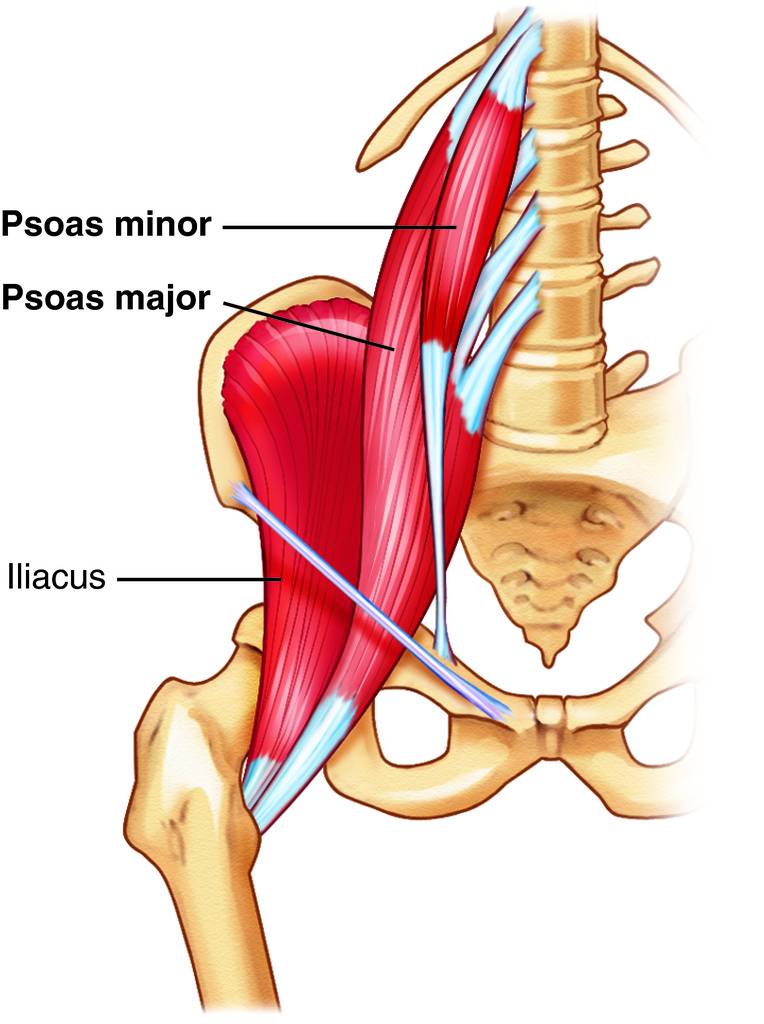Where is my Psoas and why is it important?
Written by Melissa Hurley
The Psoas is the primary connector between the torso and the leg. This deep, hidden muscle is very important; it affects posture, helps stabilize the spine, and, if it’s out of balance, can be a significant contributor to low back and pelvic pain.
The psoas major is the biggest and strongest player in a group of muscles called the hip flexors; together, they contract to pull the thigh and the torso toward each other. The hip flexors can become short and tight if you spend most of your waking hours sitting, or if you repeatedly work them in activities like sit-ups, bicycling, and certain weight-training exercises.
A tight, exhausted psoas can cause serious postural problems: when you stand up, it pulls the low back vertebrae forward and down toward the femur, often resulting in lordosis (overarching in the lumbar spine), which is a common cause of low back pain and stiffness; it can also contribute to arthritis in the lumbar facet joints. On the other hand, a weak and overstretched psoas can contribute to a common postural problem in which the pelvis is pushed forward of the chest and knees. This misalignment is characterized by tight hamstrings pulling down on the sitting bones, a vertical sacrum (instead of its usual gentle forward tilt), and a flattened lumbar spine. Without its normal curve, the lower back is weakened and vulnerable to injury, especially at the intervertebral discs.
Who knew such a deep little muscle could be so important? Now you know where to find your psoas and why it is so important to take care of those muscles. You also now know how important it is to make sure your psoas doesn’t get tight-exhausted or weak-overstretched because of all the negative side effects. Stay tuned for some ways on how you can stretch your psoas!

Thank you.
Thank you for all yor instruction.
How do treat a tight psoas causing severe back and pelvic pain?
I look forward to the next installment of this. It’s exactly the info I need to help my current low back troubles.